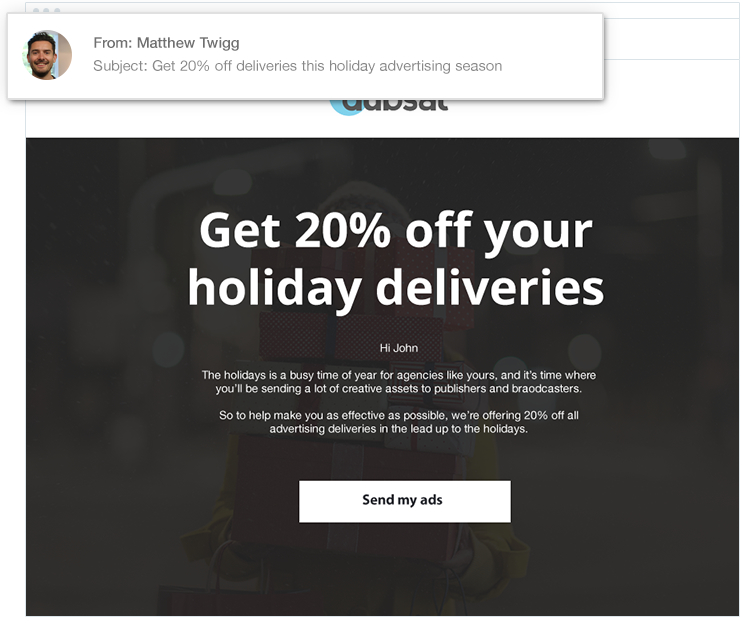In today’s digital age, human interactions are becoming increasingly limited. A person can shop for shoes, buy groceries, and pay their bills without ever needing to speak to another human being. As a result, a majority of consumers now seek out brands that offer a personalised experience.
This is why you need to personalise at every possible opportunity. One particular area of business that benefits from personalisation are email marketing. Personalised emails don’t just boost customer engagement; they also increase your revenue.
Fortunately, personalising email messages isn’t all that difficult. In order to write emails that reach your customers and not just their inboxes, here are four things you have to do.
1. Use the right email marketing platform.
If your goal is to personalise your emails, then it’s important that you use an email marketing platform that can help you achieve that goal. Look for a platform that has the following features:
- If you want to send personalised messages to your subscribers, you need to be able to segment your email list first. A platform with robust segmentation capabilities allows you to send targeted, relevant emails.
- Software integrations. By integrating third-party applications (ex: payment processors), you can easily import valuable customer data into your email marketing platform. This simplifies your entire segmentation process.
- When you automate your emails, you’re able to send emails at just the right time.
- Email templates. With email templates that are both mobile-responsive and highly customisable, you can craft emails that are tailored to the needs and interests of each of your subscribers.
2. Segment your subscribers.
You can’t personalise your messages without segmenting your list beforehand. If you choose the right email platform, your segmentation efforts will be much less of a hassle.
Here are a few ways to segment your list based on the data you have at your disposal.
- This is useful if you sell gender-specific products or services.
- This enables you to send localised emails. For example, if you are about to hold an event at a certain city, you can send email invites to all subscribers who are either from or nearby that city.
- Engagement activity. Send email content that is similar to what a specific segment engages with most often.
- Transaction history. Make personalised offers based on a specific segment’s purchase behaviour. If you run an e-commerce jewellery brand, you can create a segment for subscribers who’ve purchased necklaces from you.
Keep in mind that the segmentation process will vary from brand to brand. The data you have might not be available to other businesses and vice versa. The key is to take advantage of the data that you do have.
If you want more information on your subscribers, send them email surveys and questionnaires. Entice them to respond by offering them something in exchange for completing the survey (ex: 20% discount on their next purchase).
3. Personalise various email elements.
Modern email marketing platforms allow you to personalise a wide variety of email elements. Here are a few examples.
- Subject line. Make it a point to always personalise your email subject lines. Subject lines are a ubiquitous aspect of email marketing, so it’s a strategy you can apply to all your campaigns.
Personalise your email subject line by including your subscriber’s first name and placing it near the beginning. Doing so can increase your open rates by at least 26%.
- “From” name. This is a prominent part of your email. Your subscribers see the “from” name even before opening your message, so it’s important that you personalise it.
You can personalise the “from” name depending on the nature of the email. For instance, if the email is a response to a customer service inquiry, change the “from” name to reflect the name of the actual representative helping your customer.
(Source)
- Email body. Using your subscriber’s first name isn’t just a tactic for subject lines. Include your subscriber’s first name in the body of the email by greeting them (ex: Hello there, Sam!).
- Personalising your offers can persuade subscribers to make a purchase. Your subscribers’ transaction history can help you in this regard.
- Use different images based on the subscriber segment you are sending the email to. If you are emailing a product offer to your male subscribers, then it makes sense to use images of men wearing or using your product.
4. Optimise your send times.
The last step in creating an effective email campaign is scheduling it to send at the best possible time. However, there is no short answer as to when exactly the best time is. It all depends on the time and day that your subscribers are most active in opening and reading your messages.
Research suggests that people usually check their emails during standard work hours. This means they are likely to open your emails in the morning (8:00 a.m.) up until the late afternoon (5:00 p.m.) on weekdays.
Take this information into account when optimising your send times. An alternative is to perform A/B testing.
Send emails at different times and days and determine whether your subscribers engage with your emails in the morning or at night, and on weekdays or weekends.
Wrap up
If you want your brand to succeed, you simply can’t ignore email personalisation. The phrase “personalisation in email marketing is a requirement, not an option” may be a cliché statement uttered by marketers everywhere, but that doesn’t make it any less true.
Personalising your emails can help you develop meaningful relationships with your customers and drive your revenue in the process.
Start personalising your emails today by following these tips.
Author details: Ash Salleh is the Director of SEO at Campaign Monitor, where he works closely with content, copy, and analytics teams to improve site-wide optimization. Prior to his time at Campaign Monitor, he also provided SEO and digital marketing expertise at Zappos and Axiata Digital. You can find him on Gravatar.


